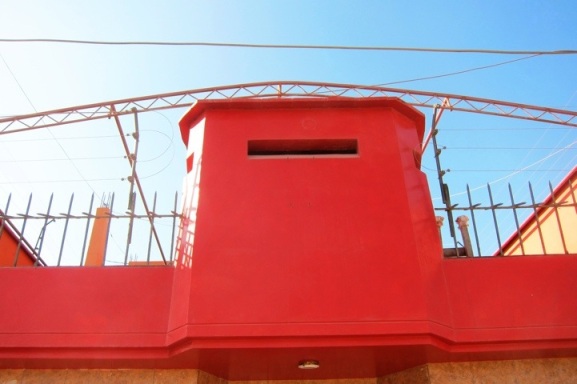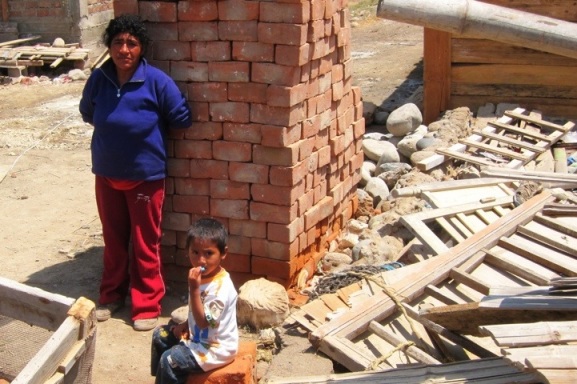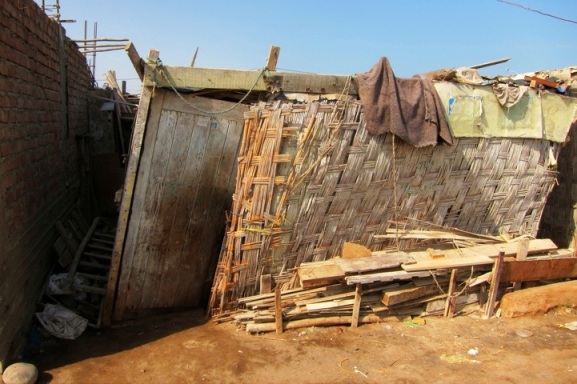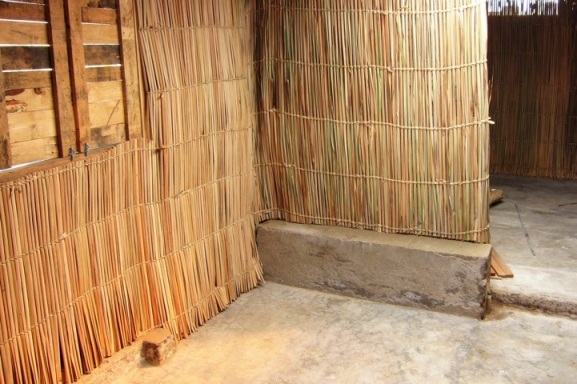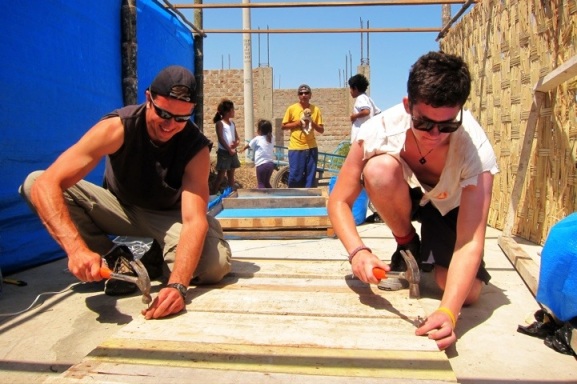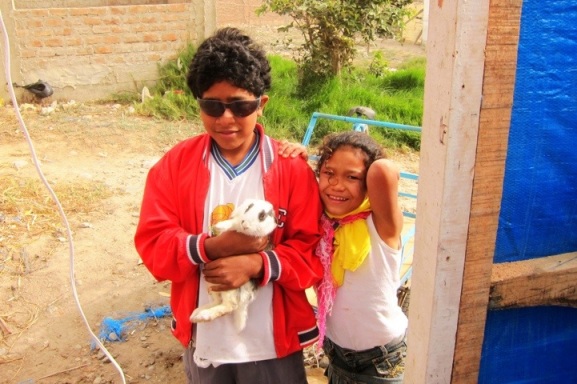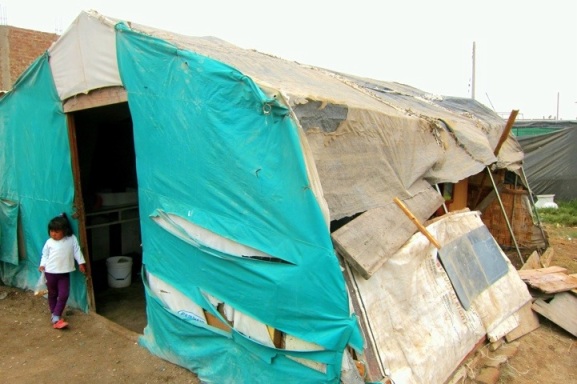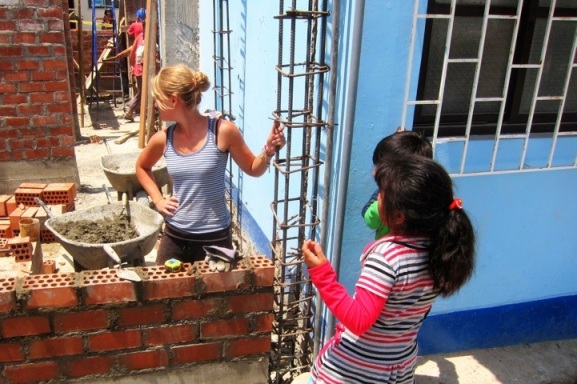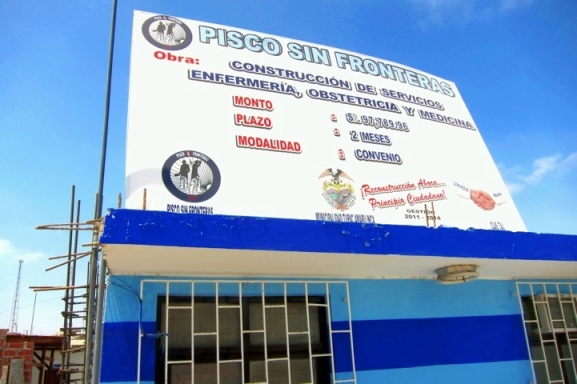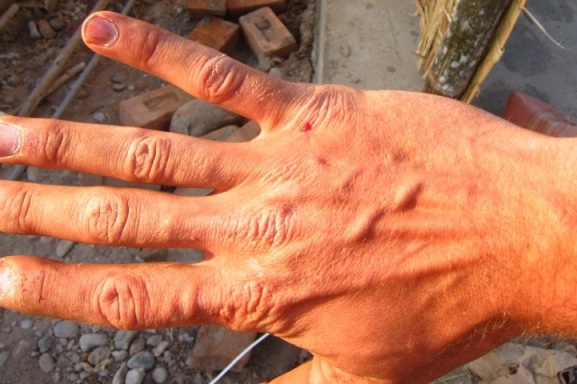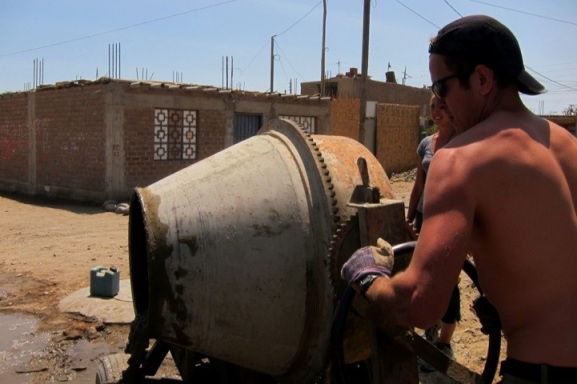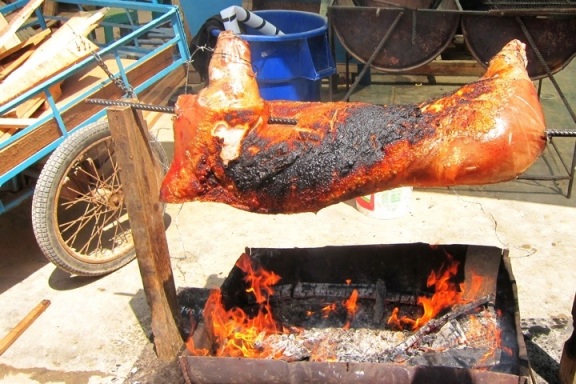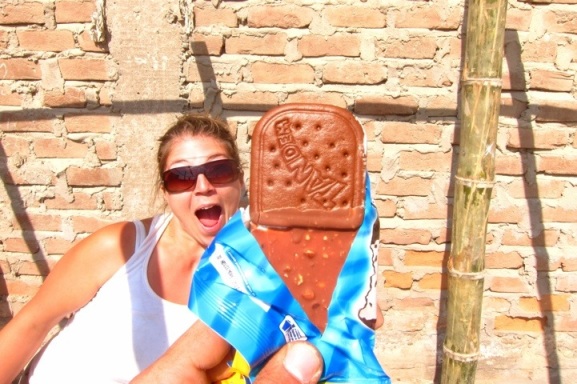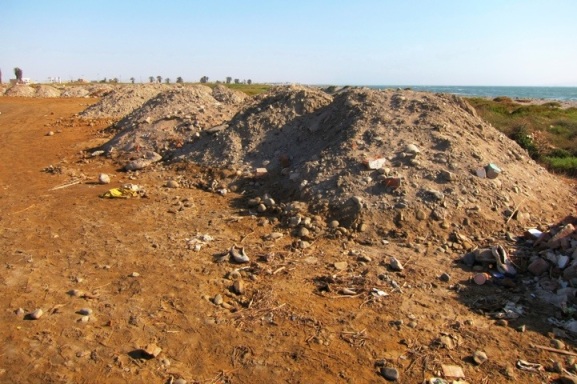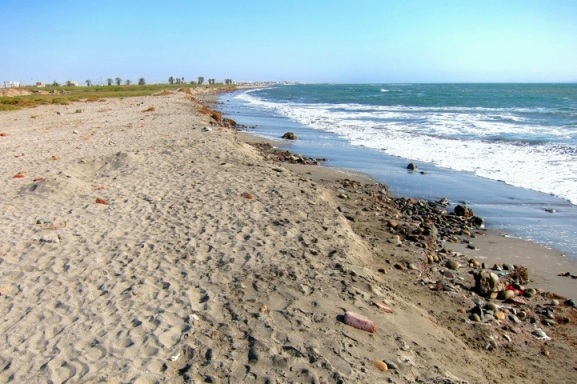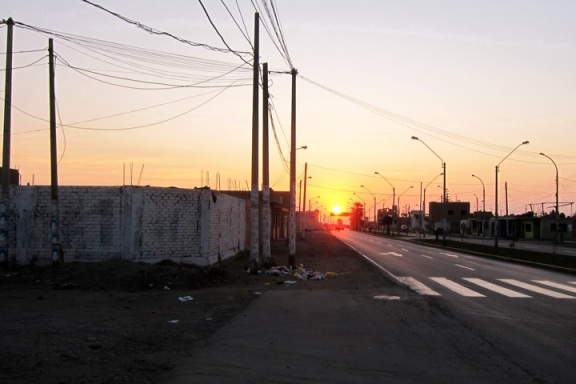Life in Pisco
A bit more Pisco. An 8.0 earthquake hit the city in August 2007, killing hundreds of people and destroying over 80% of the city of approximately 115,000 people.
In the aftermath of the earthquake, a team of locals joined with expats from Burners Without Borders, an offshoot of the very hippy Burning Man festival in the Nevada desert, to create Pisco Sin Fronterras (Pisco Without Borders).
First, a disclaimer about the following photography. Since Pisco was considered so dangerous, I didn’t dare bring out my SLR anywhere, so all the photos are from my (semi-broken) point and shoot.
The town and its citizens are incredibly poor. They were poor before the earthquake and destitute afterward. Financial and social safety nets are a pipe dream in a place where people live hand to mouth.
The first real project I worked on was “Mother Teresa”, an incredibly sweet woman with two young children whose house was completely destroyed by the quake. She subsequently moved to a makeshift shack with her family — and had been living there for four years.
Mother Teresa cooked us lunch on our first day on-site. Although I was not particularly thrilled with the cuisine (spaghetti with canned tuna) or the sanitary standards, once I learned that the families see it as an obligation to feed us to maintain their dignity (the work is then no longer a pure “hand out”), but understood also the amount of effort they go through to scrape together the money to prepare lunch, I knew I was going to stay the full two weeks. Rough start aside, there was clearly something very important and special happening here.
After finishing Mother Teresa’s house, we moved on to Pedro. Like Teresa, Pedro had a real house before the quake, but was now living in a particularly precarious looking tent. Pedro worked harder than virtually any person I have ever met. He is a dockhand in Pisco, but the quake caused freight volumes dropped precipitously, leaving him short on work, but not on energy. If a wheelbarrow was left unattended for more than five seconds, he would commandeer it and finish the job.
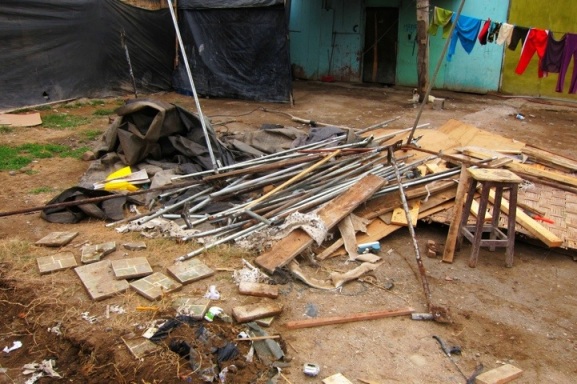
Since Pedro's new house would be built on top of the same land, we had to tear down his old tent. It was strange to demolish someone's home in front of them; the whole process took an hour.
Pisco forced me to re-examine many of my views and beliefs on aid and development. For better or worse, my general view was that projects like PSF were “band-aids” – basically hand-outs that did little to solve real underlying problems. Given my somewhat skeptical view, my general tendency when I heard about a disaster was to throw my hands up in the air in despair. “Why give people tents and temporary shelter when it will only help some people for some time? Shouldn’t we perform “preventative care” and fix the underlying problem (poverty)?”
Pisco changed this. Most of the projects we did was indeed “band-aid” work. But instead of seeing things from a macro view where “band-aids” seemed ineffective and temporary, I saw it on a micro level where they stopped the bleeding and prevented death. A wood house may not be as good as a brick house, but it is much safer, healthier, and more permanent than a tent, often allowing families to get back to health, work, and school.
A full fix is certainly the best answer, but often this is so far away and elusive that it simply serves as an excuse to do nothing. In a case like Pisco, something is certainly much better than nothing.
PSF has also moved more toward a holistic model, working on both education and community development programs. In addition to building the temporary modular homes, they also started work on more permanent community projects like schools and hospitals (surgery? No pun intended. A longer term fix to still underlying problems…)
In addition to getting a better sense of what life in a post-disaster community is like, I also gained a much greater appreciation for the value (and brutality) of manual labor. I spent three years in Dallas doing Habitat for Humanity, so I thought I already knew. But I quickly realized that is is one thing to work one day at a time and go back to your nice, air conditioned apartment… and quite another to do five and a half days in a row and go back to a dorm room. By the end of week one, I was physically spent. Walking seemed like a massive chore. Cognitive abilities declined. I started to daydream about just lying in bed, not moving.
Like most people, I love cracking jokes when I see ten construction workers on the side of the road, one of whom is working and nine of whom are gazing. “Lazy !@#$ that are wasting our tax dollars.”
Yet, after a day of pouring cement, I was looking for any excuse to take a break. It is easy to judge others from the comfort of one’s car after spending eight hours behind a desk. Personally, I think I am now much more inclined to at least think about the old maxim of “walk a mile in another’s shoes (or construction boots) before you judge them.” Easier said than done, of course, but I will always have my cement mixer to serve as a good memory.
After my first week, I think I finally got the hang of life in Pisco. Mas o menos. Suicide showers became just cold showers. In a certain light, the rubble on the beach looked a bit historic. Plus, the food was delicious, albeit a bit dangerous (see below).
In the end, I’m glad I gave it a shot. I think I would have been disappointed in myself had I just run away. I learned about life in what really amounts to hell on earth (not for me as a volunteer, but for the actual residents of Pisco), about not judging people by first (scary) appearances, and about myself. It was a draining two weeks physically and emotionally. In addition to lots of bleeding and soreness, I picked up both E.coli and Giardia during my second week. Good times.
But in the end, I was left wanting to push the envelope further. If I could do this, surely I could do something even a bit more intense. Maybe next time it will be a refugee camp in Somalia. Similar to Cotopaxi, by pushing my limits I realized the extent of what I can do — even if I was at first skeptical.
Welcome to Pisco
As mentioned previously, I planned to go from the ancient ruins of Machu Picchu to the modern ruins of Pisco, Peru.
A bit more background on Pisco and Pisco Sin Fronterras (aka PSF, the non-profit where I was slated to volunteer for two weeks) in a bit. This post is a bit more of a narrative (with no pictures, as it was all in the dark of night… and in an environment where displaying anything of value would have resulted in a guaranteed mugging).
So, the journey to Pisco:
1. Step one is a bus from Lima to Pisco, which is a relatively straightforward, if unpleasant, four hour endeavor.
2. I arrive at the Pisco bus station around 9pm. The place screams dodgy. Think dark, shadowy, with lots of shady looking characters everywhere.
3. I find a taxi driver that looks like he will not kidnap me (i.e. he could be my grandfather). We negotiate a rate and head off. He claims to know the location of PSF.
4. Some thirty minutes later, we are stopping random people on the street asking if they know where PSF is located. Example #849 of people always answering yes to any question in Peru.
5. After multiple queries of random street folk, we finally find PSF. I grab my luggage and knock on the door. No answer. It seems eerily quiet. I knock again. No answer. I emailed the day before to confirm my arrival, but never received a reply. The taxi driver is getting impatient. Young men in hoodies lurk menacingly.
6. After almost ten minutes of futile knocking, I ask the taxi driver if I could borrow his cellphone. “Sorry, no credit” comes the reply. He suggests I go to the gas station across the street and use the pay phone.
7. Imagine the sketchiest gas station you have ever visited. Multiply by three. I put some coins into the phone and dial the PSF number. No answer. I try again two more times with the same result.
8. It is now around 10pm in a town that resembles Port-au-Prince, Haiti. I’m alone with a taxi driver who speaks no English and is rapidly tiring of playing chaperone. I have not seen a single other hotel in the city. I don’t quite panic, but I definitely feel a wave of helplessness washing over me.
9. As I’m about to ask the driver for a safe place to stay for the night, two people covered in red body paint walk up to me and ask me what I’m looking for — in a British accent. They say they are volunteers at PSF and that everyone else is down by the beach for a burning man party. I’m relieved to have been rescued, but no less skeptical of the overall endeavor.
10. I thank (and tip) the taxi driver, drop off my bags, and we take a tuktuk to the beach. I’m told to never walk alone in town after 6pm, no matter what (even in a group), and never to carry anything of value. Volunteers have been robbed walking across the street to buy a bottle of water — in a group. Fantastic.
11. We arrive at the beach, which more reminiscent of a Jersey construction site dump than paradise. Much of the rubble from the earthquake was dumped on the beach out of convenience. Everyone is intoxicated and most are cross-dressed. Coming off a ten hour (sober) journey from Cuzco, I have a hard time getting into the party mood. My newfound British saviors sense this and bring me back to PSF headquarters.
12. When walking in the door, I’m greeted by a cross-dressed Australian wearing little more than ladies underwear. He wants to give me a tour of the place. Sensing danger, the Brits say they’re going to take me to their place (a second PSF property) to stay, as it is supposedly a bit less chaotic there (which in my mind seems to be a low bar to surpass).
13. We arrive at the other property, the “school house”. The room consists of a number of bunk beds crammed together with a piece of plastic sheet separating the bathroom. I didn’t expect much, but this was pretty basic.
14. I ask my British friends what I should know about Pisco and PSF. At this point, I am already wondering what I have gotten myself into and mentally working out how I can get on the first bus out of Pisco the next morning. Most of the conversation centers on digestive illnesses. During the earthquake, the water and sewage pipes mixed together. The city has been perpetually sick since then. Parasites are the norm, as is e.coli (more on this later). PSF had a massive typhoid outbreak the month before. Dysentery is not uncommon. I have a strong stomach, but for some reason the thought of parasites in particular freaks me out.
15. We go to bed around midnight. I am freezing cold since there were no extra blankets and put on a motley array of random clothing for warmth. The person below me has a snore resembling a freight train that suddenly has a massive engine failure every five minutes or so. Stray dogs are barking wildly outside. Mattress coils are poking into my back.
At this point, the overwhelming feeling I have is a desire to flee; more so than I can recall having at any other moment on the trip (even Cotopaxi). These people seem crazy and life seems awful. I’m leaning toward making up some excuse the next morning and hopping on the first bus back to Lima.
The next morning, I decide to give it one day. Sometimes the hardest experiences are the ones you learn the most from, I tell myself… not particularly reassured.

